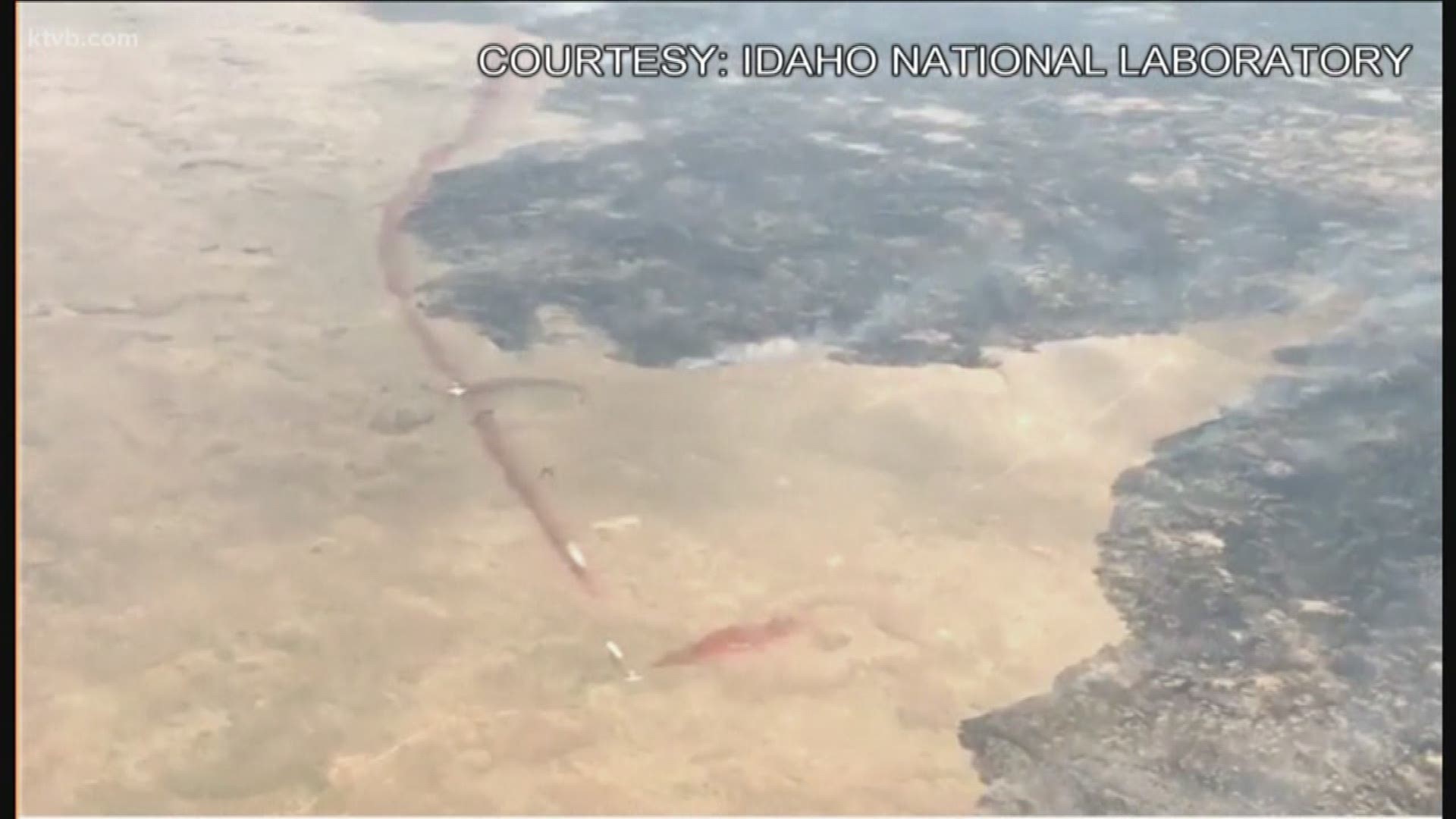IDAHO FALLS, Idaho — By REBECCA BOONE and FELICIA FONSECA Associated Press
Employees returned to work Thursday at a sprawling nuclear research site in southwestern Idaho after a wildfire forced two days of evacuations.
The lightning-caused wildfire at the Idaho National Laboratory is one of several burning across the U.S. West.
The fire is expected to be fully contained by Friday evening.
The nuclear research complex sits on a parcel of desert that is nearly the size of Rhode Island, and facilities there include nuclear reactors, high-level nuclear waste treatment plants and various nuclear research projects.
The wildfire, which started Monday night and has burned an estimated 177 square miles, threatened some of those buildings for a time. But a shift in wind direction on Wednesday moved the fire toward open rangeland and helped fire crews make progress in fighting the flames.
The lab has several safety measures for wildfires, including clearing ground around each building and having several specially trained fire crews.
"It's not our first rodeo," spokeswoman Kerry Martin said. "We have fire stations, a lot of fire equipment; we have trained firefighters and equipment to cut barriers."
Wildfires are not uncommon on sprawling nuclear sites scattered across the arid West. A blaze burned more than 62 square miles last weekend near the Hanford Nuclear Reservation in Washington state, where most of the plutonium for the nation's nuclear weapons was created. That fire didn't threaten any buildings.
Timothy Judson, director of the Nuclear Information and Resource Service watchdog group in Takoma Park, Maryland, said there were concerns that fires near nuclear sites in California and Colorado could release radioactive material.
Meanwhile, a wildfire burning in a scenic mountain pass near the northern Arizona city of Flagstaff has grown slightly.
Fire incident management spokeswoman Bonnie Strawser said Thursday the fire was about 12% contained. The fire has burned about 3 square miles since it started Sunday. Densely vegetated and rugged terrain is creating challenges for firefighters.
Rain helped on Wednesday and allowed some residents of one neighborhood to return home after evacuations, but also raised the risk of flooding because of aging drainage systems, officials said.
A drying trend is expected in coming days before seasonal rain picks up again early next week, officials said.
The area had not received any significant moisture in weeks and had no previous wildfires on record. That means the dense forest with lots of pine needles and grass will burn more intensely, creating a hard clay surface that quickly sheds water.
A team that will analyze the soil and look at ways to stabilize it was expected to arrive Thursday.
"It's not an easy task, but we're going to give it our best shot," Coconino National Forest supervisor Laura Jo West said at a community meeting.
Ladd Vagen, his wife and two daughters were among the residents of more than two dozen homes who were ordered to evacuate. They were allowed to return home Wednesday, and found everything exactly as they left it with an added smell of smoke.
The family is on notice that they may have to flee again.
Arizona's governor has declared an emergency, freeing up funding to battle the blaze. The firefighting cost to date is $2.1 million, incident commander Rich Nieto said.

